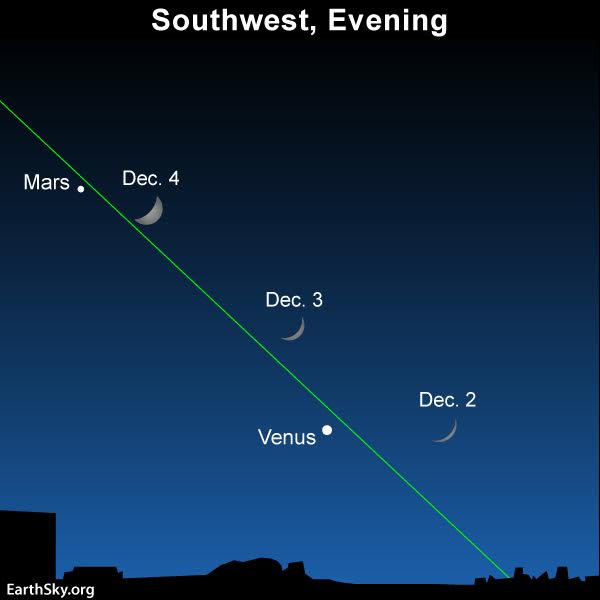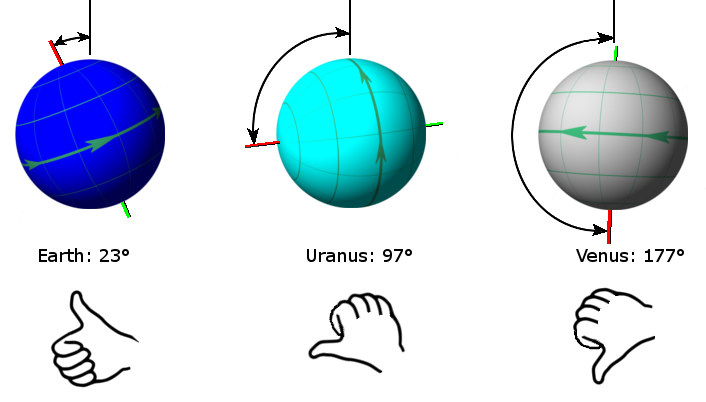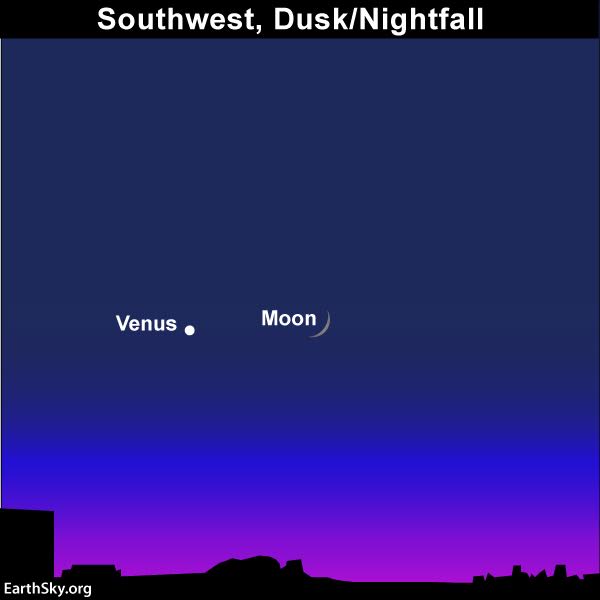Tonight – December 2, 2016 – you won’t want to to miss the grand coupling of the moon and Venus at dusk and early evening! After all, the moon and Venus rank as the second-brightest and third-brightest celestial bodies, respectively, after the sun. Think photo opportunity.
Two other visible planets reside in the December 2016 evening sky: Mercury and Mars. It’ll be a challenge to catch the planet Mercury below the moon and Venus, and easier to view the red planet Mars above the moon and Venus. Mercury follows the sun below the horizon before nightfall, whereas Mars stays out until about 9 to 10 p.m. at mid-northern latitudes. At southerly latitudes in the Southern Hemisphere Mars stays out until very late evening.
From around the world, the waxing crescent moon will join up with Mars on the sky’s dome in a few more days. See the sky chart below.

Many of you may already know that Earth’s orbital axis tilts about 23.45o relative to the ecliptic – Earth’s orbital plane. The inclination of Mars’ rotational axis is nearly the same, at just over 25o.
But the rotational axes of the moon and Venus are almost perpendicular to the ecliptic. The moon is only about 1.54o out of perpendicular to the ecliptic while Venus is about 2.64o off.
That means the lunar terminator – shadow line between lunar day and lunar night – is nearly perpendicular to the ecliptic as well. Extending the lunar terminator in one direction guides you to the lunar north pole and the other direction to the lunar south pole.
Although you need a telescope to see the phases of Venus, the Venusian terminator (shadow line) acts as your guide to the Venusian poles as well. The Venusian terminator is almost perpendicular to the ecliptic, and extending the Venusian terminator in one direction takes you to Venus’ north pole and in the other direction to Venus’ south pole.
Look at the moon. The near side of the moon rotates from east to west (toward sunset) while the far side rotates from west to east (toward sunrise). In other words, if you had a bird’s-eye view of the north side of the solar system plane, you’d see the moon orbiting Earth in the same direction that the moon rotates on its axis: counterclockwise.
However, as seen from Earth, we only see one side of the moon. That’s because the moon rotates on its axis in the same period of time that it orbits the Earth. This is known as synchronous rotation.
Now look at Venus. The near side of Venus rotates from west to east (toward sunrise) and the far side rotates from east to west (toward sunset). Given a bird’s-eye view of the north side of the solar system plane, you’d see Venus orbiting the sun counterclockwise but rotating on its axis in a clockwise direction.
By the way, the Earth orbits the sun in the same direction that it rotates upon its axis: counterclockwise.

By the “right hand” definition of north and south, the hemisphere of a planet that rotates counterclockwise is called the northern hemisphere and that which rotates clockwise is called the southern hemisphere. So, while the moon’s northern axis points north of the ecliptic, it’s Venus’s southern axis that points north of the ecliptic.

Bottom line: On Friday evening – December 2, 2016 – watch after sunset for the moon and Venus in your western sky.












